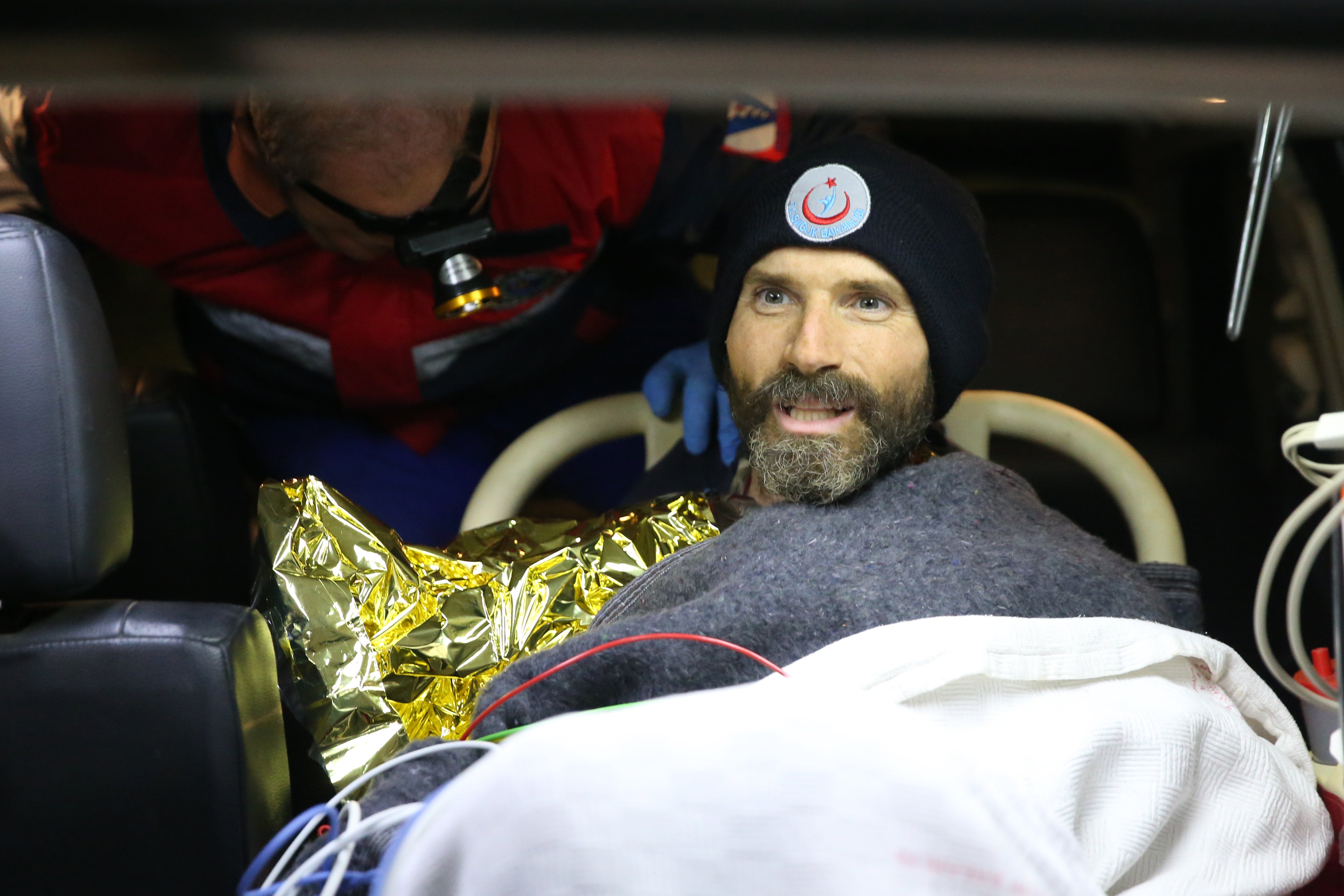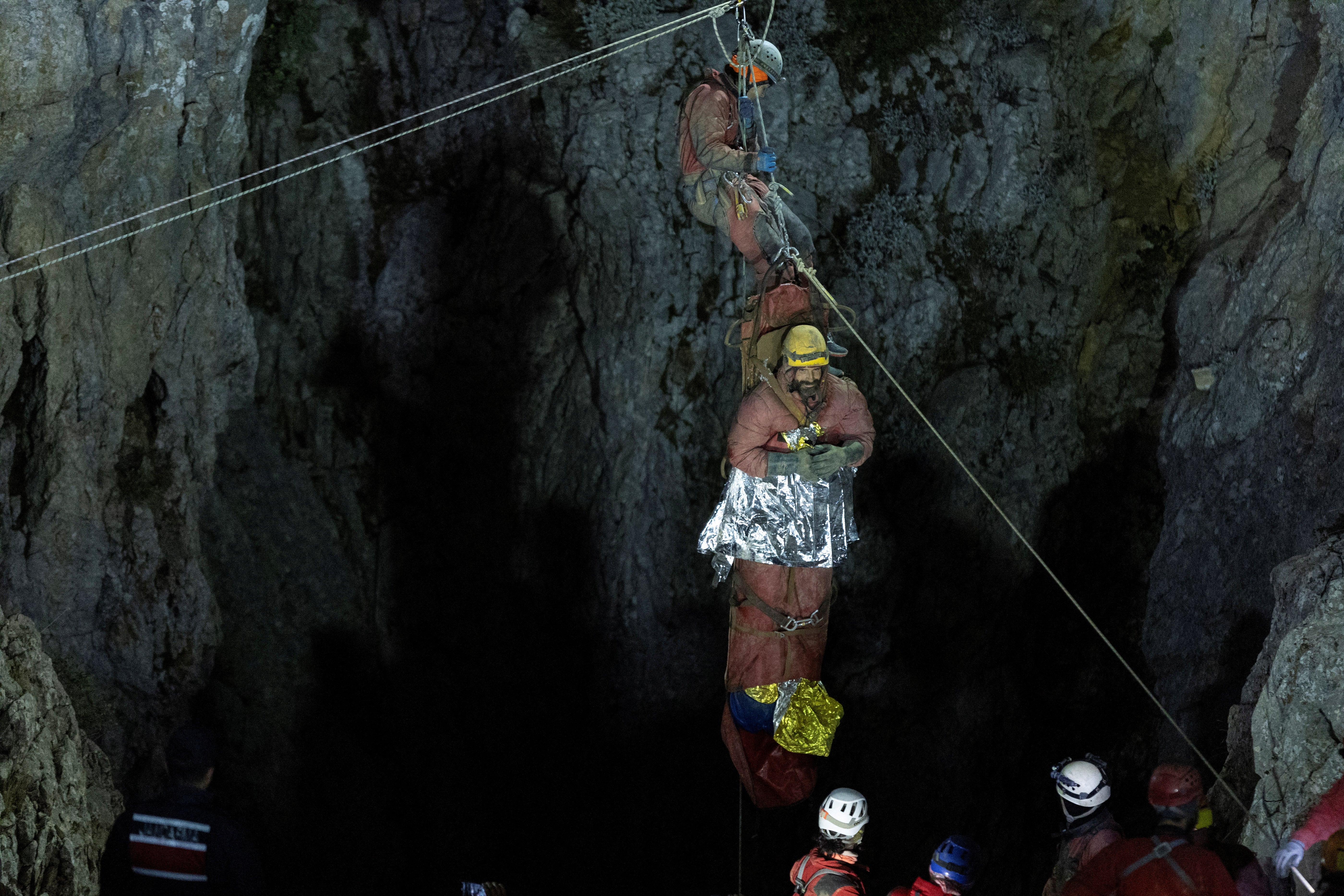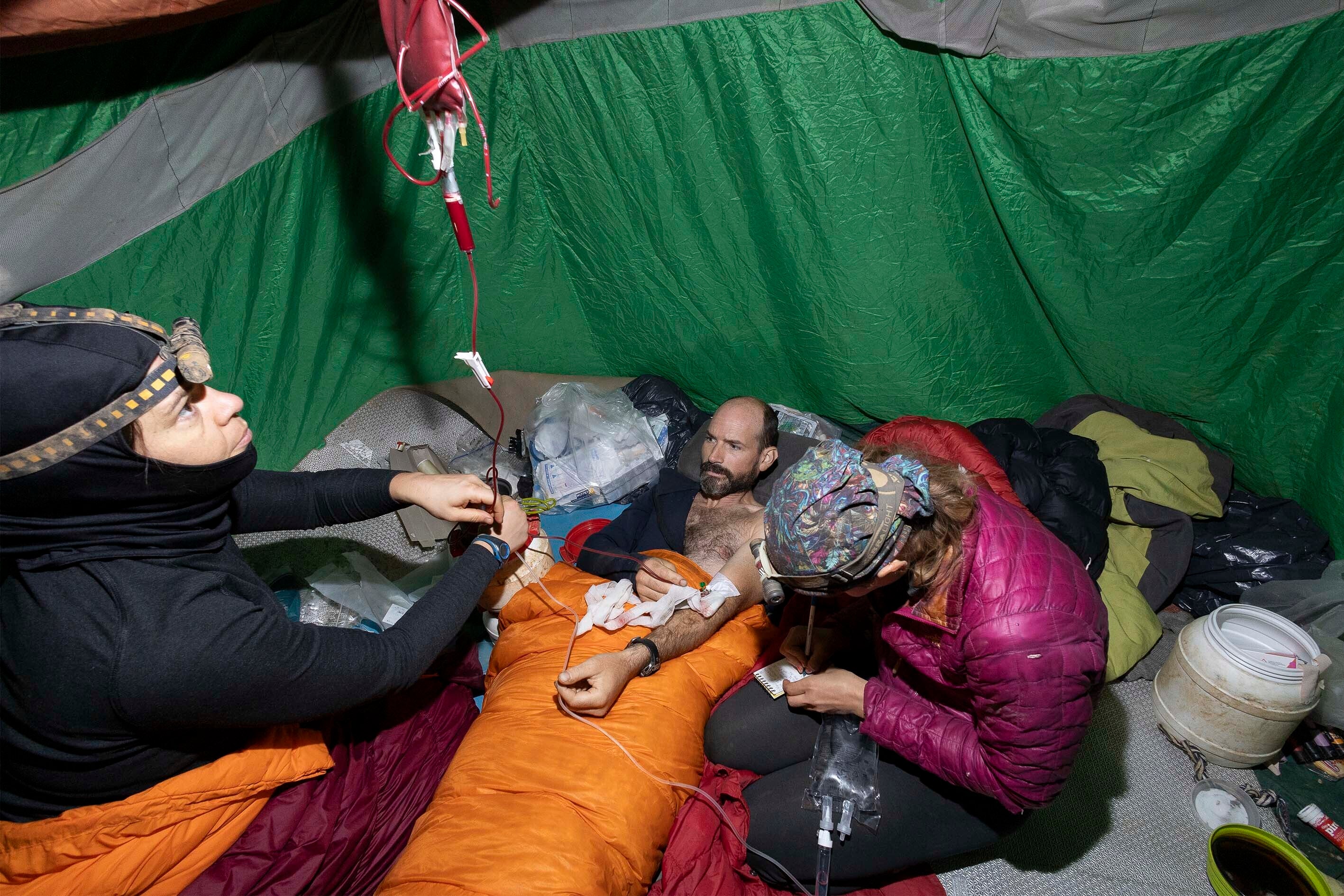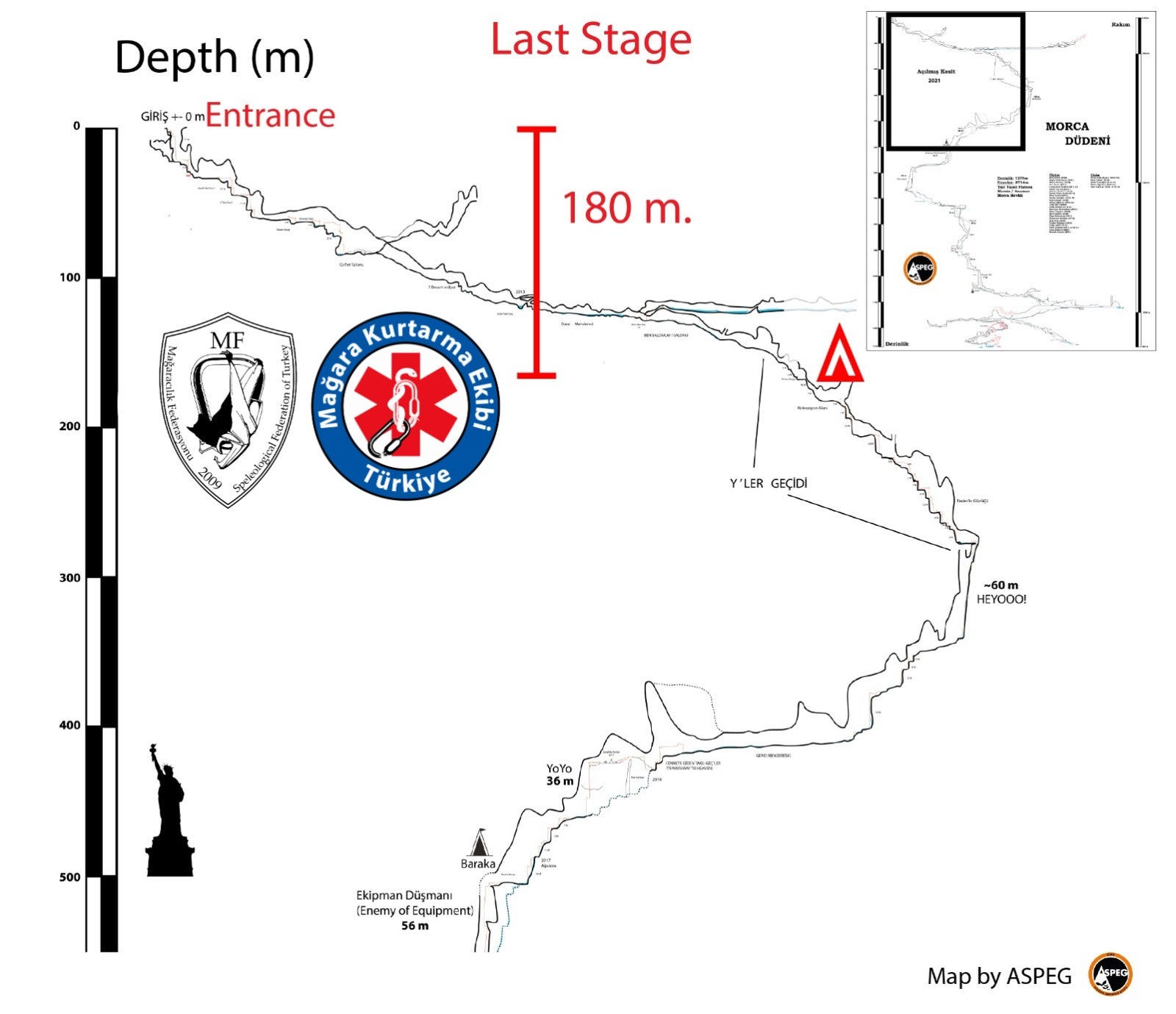Explosions, tiny crevices, and 190 experts: Inside the dramatic cave rescue of trapped explorer Mark Dickey
When Mark Dickey issued a distress call from 3,400 feet below the surface, rescuers from across Europe rallied to save him, Joe Middleton writes


Explosions, steep, cramped crevices and 190 experts navigating one of the world’s deepest caves – the rescue mission to save renowned American explorer and researcher Mark Dickey was never going to be easy.
But after a three-day evacuation operation involving experts from all over Europe, the 40-year-old explorer was finally pulled from the depths of the Morca cave system in the Taurus Mountain region in south Turkey more than a week after he went in.
Mr Dickey first fell ill on 2 September after having stomach pains that rapidly escalated to gastrointestinal bleeding. He became too ill and fragile to pull himself out – leaving him stranded 3,400 feet below the surface. In the wake of his rescue, he said that he had soon started to throw up large quantities of blood inside the cave.
“My consciousness started to get harder to hold on to, and I reached the point where I thought ‘I’m not going to live’,” he said.

Emergency services were scrambled. His fiance and fellow caver, Jessica Van Ord, was with him at the time and stayed with him until medics arrived.
A team of 190 experts from Bulgaria, Croatia, Hungary, Italy, Poland and Turkey was rapidly assembled to save the highly trained caver and well-known personality in the international speleological – the scientific study of caves – community.
His treatment started a day later by a Hungarian medical team who needed to stabilise his condition. Dr Zsofia Zador, a caving enthusiast, was among the first to treat Mr Dickey inside the cave.
Ms Zador, an intensive care specialist from Budapest, was on her way to hospital to start her early morning shift when she got news of Mr Dickey's condition.
The 34-year-old quickly arranged for a colleague to take her shift and rushed to gather her caving gear and medical equipment, before taking a plane to Turkey to join the rescue mission, she told The Associated Press. “He was relieved, and he was hopeful,” she said when asked to describe Mr Dickey’s reaction when he saw her in the cave. “He was quite happy. We are good friends.”
Ms Zador said Mr Dickey was hypovolemic – suffering from loss of fluid and blood – but said he was in a “stable condition” by the time she reached him because paramedics entering before her had “treated him quite well”.
“It was a tricky situation because sometimes he was quite stable and it felt like he could get out on his own, but he could [deteriorate] once again,” she said. “Luckily he didn’t lose any consciousness and he saw the situation through.”
Before his evacuation began, Mr Dickey appeared in a video thanking the Turkish authorities for their rapid response in pulling together a rescue operation and for saving his life
“I don’t quite know what’s happened, but I do know that the quick response of the Turkish government to get the medical supplies that I need, in my opinion, saved my life,” Mr Dickey said in the video. “I was very close to the edge.”

Teams comprised of doctors, paramedics and experienced cavers then took turns staying by his side at all times and administering him with IV fluids and blood.
The evacuation effort to lift Mr Dickey out of the cave began on Saturday. The biggest challenges for the rescuers getting him out of the cave were the steep vertical sections and navigating through mud and water at low temperatures in the horizontal sections.
Before the evacuation could begin, rescuers first had to widen some of the cave’s narrow passages, install ropes to pull him up vertical shafts on a stretcher and set up temporary camps along the way.

They also used explosives to blow open parts of the cave and rock hammers were also being used so they could safely pull Mr Dickey through while he was on the stretcher.
Rescuers carried him with the help of a stretcher, making frequent stops at the temporary camps set up along the way before he finally reached the surface early Tuesday.
“Mark Dickey is out of the Morca cave,” said a statement from the Speleological Federation of Turkey. It said that Dickey was removed from the last exit of the cave at 12.37am local time on Tuesday.
“He is fine and is being tended to by emergency medical workers in the encampment above,” the statement said. Lying on a stretcher surrounded by reporters following his rescue, Dickey described the ordeal as a “crazy, crazy adventure”.

“It is amazing to be above ground again,” he said, thanking the Turkish government for saving his life with its rapid response. He also thanked the international caving community, Turkish cavers and Hungarian Cave Rescue, among others.
He added that in the cave he had started to throw up large quantities of blood. “My consciousness started to get harder to hold on to, and I reached the point where I thought ‘I’m not going to live,” he told waiting reporters.
He was flown to hospital in the nearby city of Mersin in a helicopter. The Turkish disaster relief agency, AFAD, said on Tuesday that Mr Dickey was “doing well” without providing further details on his condition.
Mr Dickey, who is from Croton-on-Hudson, New York, is a well-known cave researcher and a cave rescuer himself who had participated in many international expeditions.
He and several other people on the expedition were mapping the 1,276-metre-deep Morca cave system for the Anatolian Speleology Group Association.

After his rescue, the head of Turkey’s Disaster and Emergency Management Presidency, Okay Memis, told a news conference that Mr Dickey’s health was “very good”.
The European Cave Rescue Association said many cave rescuers remained in the cave to remove rope and rescue equipment used during the operation.
The association expressed its “huge gratitude to the many cave rescuers from seven different countries who contributed to the success of this cave rescue operation.”
“The fact that our son, Mark Dickey, has been moved out of Morca Cave in stable condition is indescribably relieving and fills us with incredible joy,” Mr Dickey’s parents. Debbie and Andy Dickey, said in a statement after the rescue.
Additional reporting by agencies
Join our commenting forum
Join thought-provoking conversations, follow other Independent readers and see their replies
Comments


Bookmark popover
Removed from bookmarks